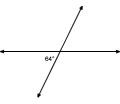


Chaotic semiconductor lasers were realized by using external optical feedback 8, 9, 10, 11, 12, 13, 14 and optical injection 20, 26. But semiconductor lasers are extremely sensitive to external perturbations because their lasing frequency is affected by carrier density. As class B lasers, semiconductor lasers governed by two equations are hard to exhibit chaotic output without external perturbations. The chaotic laser was first demonstrated without an external perturbation for a class C laser. Based on decay rates of electric field, population inversion, and polarization, lasers were classified as class A, B, and C governed by one, two, and three equations, respectively 25. High-bandwidth chaotic semiconductor lasers have been widely investigated for the generation of random numbers 8, 9, 10, 11, 12, 13, 14, 15, 16, 17, 18, 19, 20, 21 and secure communications 22, 23, 24. However, due to the low signal level associated with physical noise, non-deterministic random number sequence generation rates from stochastic processes are usually less than 100 Mbit s −1 8. Physical entropy sources, such as electronic and photon noise, thermal noise in resistors, and frequency jitter in oscillators, have been applied to generate non-deterministic truly random number sequences 5, 6, 7. Pseudorandom numbers can be generated by using deterministic algorithm programs but with limited unpredictability, which reduces the randomness and associated security. Random numbers are crucial in the generation of cryptographic keys for classical and quantum cryptography systems, the reliability of modern networked society, and stochastic simulation, etc. Our findings provide a novel and easy method to create controllable and robust optical chaos for high-speed random number generation. The internal mode interaction and corresponding carrier spatial oscillations pave the way of mode engineering for nonlinear dynamics in a solitary laser. By adjusting mode frequency interval close to the intrinsic relaxation oscillation frequency, nonlinear dynamics including self-chaos and period-oscillations are predicted and realized numerically and experimentally due to internal mode interaction. Here, we demonstrate the first self-chaotic microlaser based on internal mode interaction for a dual-mode microcavity laser, and realize random number generation using the self-chaotic laser output. Nevertheless, chaotic lasers under external feedback are hindered by external feedback loop time, which causes correlation peaks for chaotic output. Chaotic semiconductor lasers have been widely investigated for generating unpredictable random numbers, especially for lasers with external optical feedback.


 0 kommentar(er)
0 kommentar(er)
